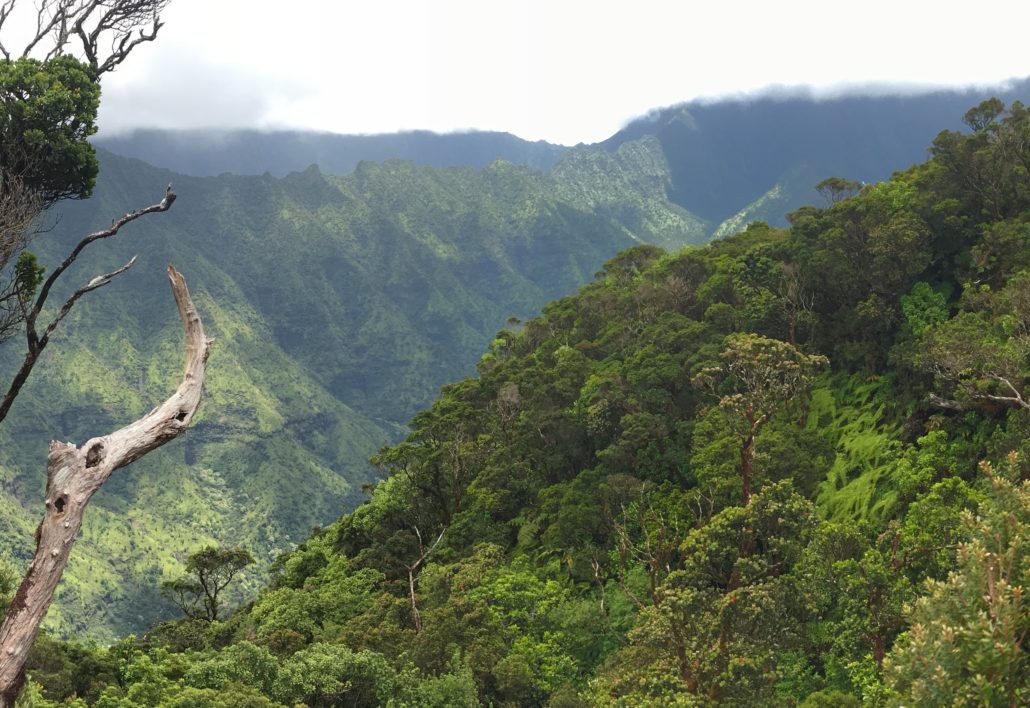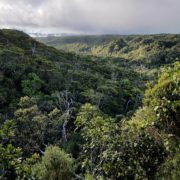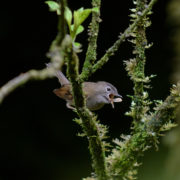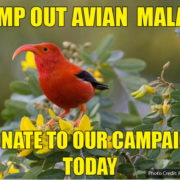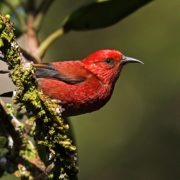Notes from the Field: Heavy rain in one of the wettest places on earth
/in Blog/by MonikaThe Alaka’i Plateau, which sits on top of Kaua’i, is one of the wettest places on earth. On the eastern end of the plateau, near the summit of the island, Mt. Wai’ale’ale receives an average of 450 inches of rain per year. The Hawaiian name roughly translates to “overflowing water”, which is a scenario that occurs frequently across this montane rainforest.
The wettest place got wetter in an extreme rain event that occurred during one of my recent trips to our main bird camp back in mid-April. My girlfriend, Kelsey, came out to help as a volunteer, and she and I were busy following a recently radio-tagged Akeke’e the day before the big storm came (if you’re serious about bird conservation and can handle working hard in tough terrain, contact us about volunteer opportunities!). From the shelter of the camp Weatherport we listened to thunder and heavy rain all night as lightning lit up the scene. We sure were thankful for camp that night! According to co-workers who have been around much longer than I, the Alaka’i doesn’t see much in the way of thunderstorms, so I knew that this was a rare event.
At 4:30 AM I decided to run outside to look at the stream near camp and found it to be raging in a way that I am certain that no one else has ever seen!! Illuminating the darkness of the night and storm with my headlamp, I could see the water rushing by at frightening speeds, carrying anything away in its path. On my very first trip to the Alaka’i, we had had heavy rains and the seasoned members of the crew said that they have never seen the stream so high. Well, on the early morning of April 15th, the stream was much higher. It was to the point where if it had risen just a few more inches, our deck would have been sitting in the main channel of running water! Although it looked frightening, I knew that we were safe where we were in the headwaters of this stream, and higher ground isn’t hard to find from camp. I was able to go back to sleep that night and by 9:30 AM the stream had settled down to the point where Kelsey and I crossed it to do more work that day.
Many of the streams in Kaua’i can be very “flashy”, meaning that they rise fast during rain events, but also can lower just as quickly. Down in the lowlands, however, the water that collected all over the mountain had combined and found its way through the main drainages to the ocean and caused historic damage, especially to the famous north shore of the island. Twenty-seven inches of rain over 24 hours were measured near Hanalei during this record-breaking storm, and the island is still recovering. Severe weather events and disasters can be catastrophic for critically-endangered species since population levels are so low, but thankfully the individual birds that we track endured the storm and bird camp survives. Some Kaua’i forest bird species were never seen again after hurricane Iniki leveled much of the forest on the plateau back in 1992. These kind of disasters are one of the many threats we address in efforts to protect these birds. For now, species like the ‘Akikiki, ‘Akeke’e, and Puaiohi are still hanging on in Kauai’s high-plateau wilderness, and I hope that it continues this way.
SaveSave
SaveSaveSaveSave
SaveSave
Notes from the Field: Riding out the 100-Year Flood
/in Blog/by Monika(From the notebook of KFBRP field assistant Elizabeth Abraham)
Phew! What a Week. It started with a nest collection on Wednesday April 11th, and finished this with another collection on Wednesday, April 19th! Both nests were Akeke’e which brings our total number of Akeke’e eggs collected this season up to seven. We are definitely growing our captive population quickly this year. Of course we are also working hard on completing the Hawai’i Forest Bird Survey transects (Big Shout Out to all of our AMAZING Volunteers!) and monitoring our rat grid in the core habitat as well.
Apparently, on April 14th, Kaua’i got slammed with over 27in of rain in a 24-hour period! We were on national news for what was a 100-year flood. Two staff members were riding out the weather in the core habitat where they were working on our rat grid and I was up at one of our ridge locations with a volunteer! We had hiked from a remote site to our ridge camp on Saturday just has the rain started. We flagged transects as we moved southeast along the plateau and got completely soaked. When we arrived at camp, it was only to discover that the weight of all the water had caused the tent to collapse and fill with water too! Good thing the down pour was so intense and there wasn’t much else we could do, so we had plenty of time to repair the tent and bail it out. Once the tent was clean and we were dry, we rode out the storm playing cards and watching the light show outside. It was definitely a wet 24 hours, but I got to snap a pretty cool picture the next morning of all the water falls on the ridge across from camp.
We were successfully able to count our transects over the next two days and the nests we were monitoring weathered the storm perfectly! All of our nests were still active at our remote site when we returned and the collection on Wednesday, April 11th went beautifully. The weather was even the nicest I’ve seen it in a long time. Many mahalos to our helicopter crew for flying us out with eggs on Wednesday despite how busy everyone is with recovery and relief efforts on the North Shore of the Garden Island. I look forward to another nest collection coming up next week!
How to Find an ‘Akeke’e Nest in a Sea of Wilderness
/in Blog/by MonikaHow do you find an ‘Akeke’e nest among all the trees in the Alaka’i? It’s no easy task especially since it is estimated that there are less than 1000 individuals left in the wild. BUT, this is what the Kauai Forest Bird Project is faced with in their efforts to save the species.
Thanks to grant from the Royal Society for the Protection of Birds (RSPB) and the USFWS State Wildlife Grants program, KFBRP was able to use telemetry to help find, tag, and then track some of these birds. Here’s how it is going:
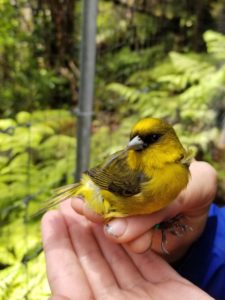 So far, three female ‘Akeke’e, two male ‘Akeke’e, and one male ‘Akikiki have been tagged. Two of the females and the ‘Akikiki were tagged early in the season, but following the females has been tough. One disappeared out of range within two days, and the other after a week. However, it was subsequently located via helicopter and then located every few days thereafter. The ‘Akikiki was easy to follow because it had a nest. This bird was used as a test of range, which was found to be about 200m.
So far, three female ‘Akeke’e, two male ‘Akeke’e, and one male ‘Akikiki have been tagged. Two of the females and the ‘Akikiki were tagged early in the season, but following the females has been tough. One disappeared out of range within two days, and the other after a week. However, it was subsequently located via helicopter and then located every few days thereafter. The ‘Akikiki was easy to follow because it had a nest. This bird was used as a test of range, which was found to be about 200m.
The KFBRP field crew had to take a break due to cold rainy weather, so the the last three tags have just gone out in the last couple of weeks. A nest for one of the females was found, and it then it fledged. KFBRP has been able to keep track of her and her fledglings’ movements for a couple of weeks now. They moved several hundred meters away but are now coming back to the area she had nested in, so we are hoping she will renest. The two males have been moving around a lot and are sometimes together, but most often a few hundred meters apart. No signs of nests for them yet. KFBRP plans to do some more banding and tagging next week.
SaveSave
SaveSaveSaveSave
SaveSave
SaveSave
SaveSave
SaveSave
SaveSave
New Study Reveals Just How Important Native Birds are to the Forest
/in Blog, News/by Monika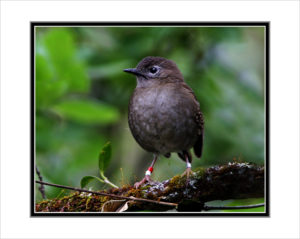 A recently published study from the heart of Kauaʻi’s Alakaʻi Wilderness Preserve has revealed that Puaiohi, a critically endangered native thrush, plays a key role in keeping the rainforest healthy. This delicately patterned songbird eats native fruits and disperses their seeds, but it is estimated that there are fewer than 500 birds left in the wild. Researchers with the Kauai Forest Bird Recovery Project (KFBRP) looked at whether the introduced Japanese White-eye can fill this niche but found that White-eyes prefer smaller seeds and are also spreading invasive plants.
A recently published study from the heart of Kauaʻi’s Alakaʻi Wilderness Preserve has revealed that Puaiohi, a critically endangered native thrush, plays a key role in keeping the rainforest healthy. This delicately patterned songbird eats native fruits and disperses their seeds, but it is estimated that there are fewer than 500 birds left in the wild. Researchers with the Kauai Forest Bird Recovery Project (KFBRP) looked at whether the introduced Japanese White-eye can fill this niche but found that White-eyes prefer smaller seeds and are also spreading invasive plants.
KFBRP Project Coordinator, Dr. Lisa Crampton, said, “Kauaʻi has experienced extinction and catastrophic declines in fruit-eating native bird species, combined with the introduction of non-native species. Our results underscore how important it is to protect Puaiohi if we want preserve Kauaʻi’s montane ecosystem. This is the only native songbird capable of dispersing larger seeds in the rainforest”.
The study was led by Dr. Monica Kaushik, a Fulbright Fellow at Colorado State University (CSU), in collaboration with KFBRP and Dr. Liba Pejchar of CSU. Kaushik was surprised to find that sites with Puaiohi received substantially higher ‘seed rain’ (number of seeds caught in seed traps) even though fruit abundance was the same. She says, “Non-native birds cannot adequately replace the seed dispersal services provided by Puaiohi. If Puaiohi continue to be rare and their range is restricted, we’re likely to see important changes in the plant community, such as increased numbers of invasive or small-seeded plants. Other native plants might fail to regenerate altogether”.
Kauaʻi has lost five of its native birds in recent decades and those that survive are restricted to a small area of pristine forest at higher elevations. They are at risk from introduced predators, such as rats and feral cats, avian malaria, and habitat destruction.
This latest study adds to the body of evidence showing that the loss of native birds jeopardizes the fate of native plants. This has consequences for people as the forest provides humans with free ecosystem services such as flood water attenuation, filtration, and fertilization for fields downstream.
Co-author Dr. Liba Pejchar agrees: “KFBRP works hard to protect Kauai’s forest birds despite a perfect storm of disease, invasive predators, and limited resources to address these challenges; our results reinforce the critical importance of their efforts not only for the birds, but also for Kauai’s diverse and beautiful rainforest”.
You can read the full study here. The Garden Island Newspaper also covered this story.
SaveSave
KFBRP Launches New Website
/in Blog, Homepage Posts/by MonikaKFBRP is excited to announce the launch of its new website. Take a moment to look around. Browse our Kauai Forest Bird Galleries, check out volunteer and graduate student opportunities, or collaborate with us on a research project.

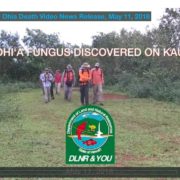
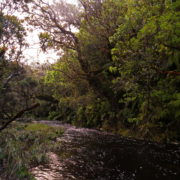
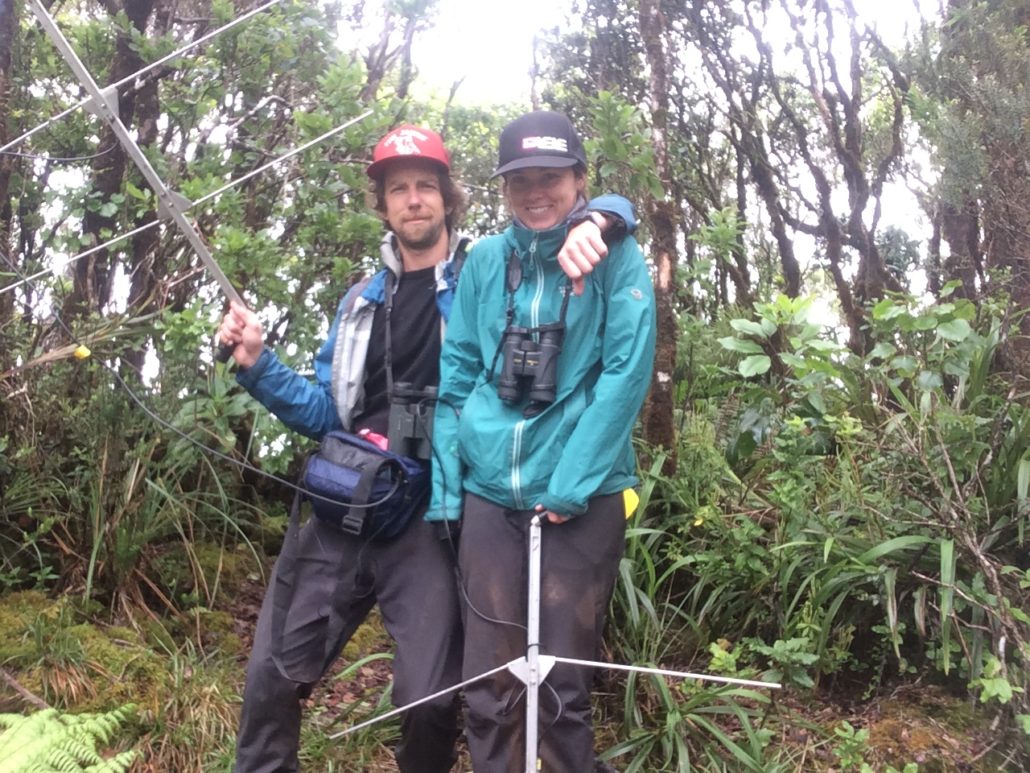
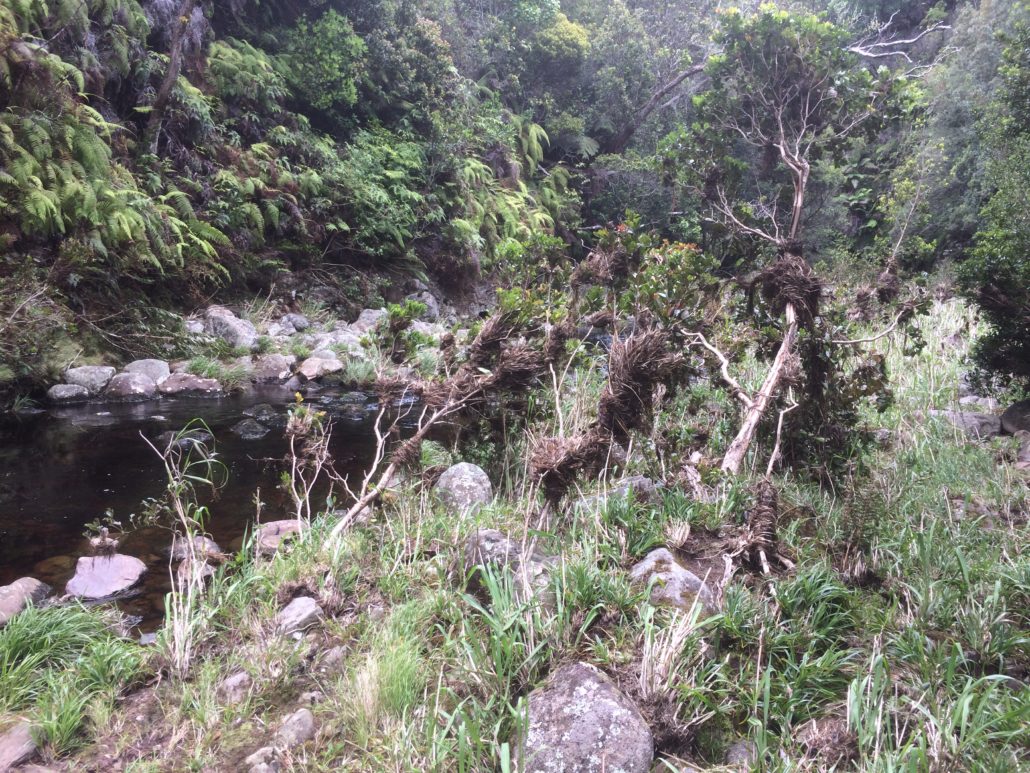
 Liz Abraham
Liz Abraham